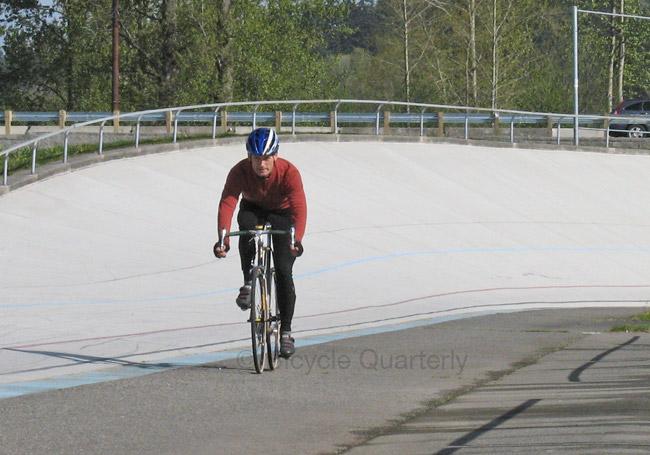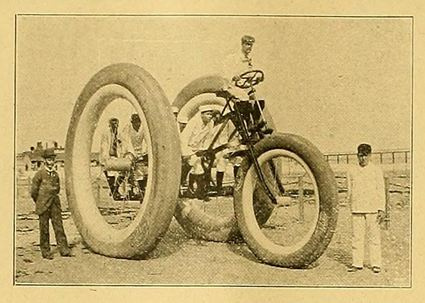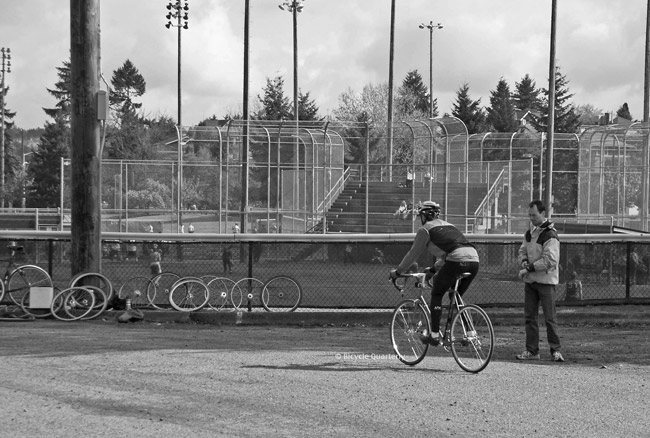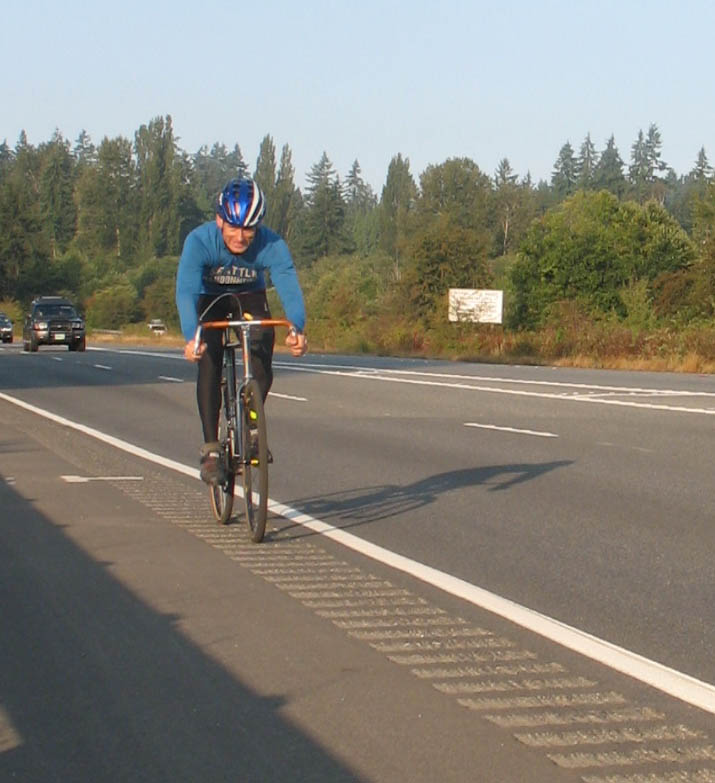Tires: How Wide is too Wide?

How wide a tire is too wide for optimum performance? Our research shows that wider tires don’t give up anything on smooth roads, and gain a significant advantage on rough roads. This has been shown for tires up to 31 mm wide.
It’s now a well-established fact that wider tires roll faster than narrow ones. Professional racers now use 25 mm tires, which are 20% wider than the tires that most racers used just 20 years ago. Will this trend continue? Can we expect racers to be on 30 mm tires in the future? No matter what the pros do – they are influenced by many factors that have little to do with science – the real question is: Up to what point are wider tires faster?

It is obvious that the tires in the photo above will not roll very fast. Clearly, at some point, the performance benefits of wider tires (shorter contact patch and thus smaller hysteretic losses; reduced suspension losses) will be outweighed by the disadvantages of extra weight and increased wind resistance.

In our original tire tests (above), we tested the same tires in 21, 23 and 25 mm widths on a moderately rough “backroad” surface. The results were clear: The 21 mm tires were slowest, 23 mm was in the middle, and 25 mm tires were fastest. The speed difference between 21 and 25 mm tires amounted to about 2.5%. Over a typical 200 km brevet, I would gain about 11 minutes. It’s not huge, but significant. These results appear to have prompted the current trend of racers using wider tires.
What about tires that are wider than 25 mm?

Our testing on rumble strips showed that on very rough surfaces (the equivalent of cobblestones), 42 mm tires are faster than 25 mm tires. However, few of us ride all the time on cobblestones, and what we want to know is whether we give up anything on smooth roads when riding wider tires.
To determine this, we tested Grand Bois tires in 26, 29 and 31 mm widths on a super-smooth asphalt surface (see photo at the top of the post). The results were the same for all three tires. On the smoothest asphalt, you don’t gain anything by going to tires wider than 25 mm, but you also don’t give up anything.
Those tests were run at 25 km/h (16 mph). At higher speeds, the aerodynamic disadvantages of wider tires might be greater. Does that mean that 31 mm tires are a fine choice for riding at moderate speeds, but that you would be better off on 25 mm tires when you go faster?

We tested both 25 and 31 mm-wide tires in the wind tunnel. The result: The raw data showed a 1% increase in wind resistance for the wider tires, but the results weren’t statistically significant. Even if we accept them at face value, the added wind resistance is too small to make a noticeable difference. For example, at a very high speed of 40 km/h, decreasing your wind resistance by 1% only adds 0.4% (or 0.14 km/h) to your speed.
What about the heavier weight of wider tires blunting the acceleration of your bike? That doesn’t appear to be a major factor either, since wheel weight is less important than many riders believe. (See this recent post for a discussion of wheel weight on professional racers’ bikes.) If you use smaller 650B wheels, you make up some of the greater weight of a wider tire through a lighter rim.
All this data shows that 31 mm tires roll as fast as 25 mm tires, even on very smooth roads. And when the roads get rougher, the wider tires roll faster.

What about even wider tires? Our on-the-road experience suggests that even 42 mm-wide tires do not roll slower than 25 mm tires (above), but without rigorous testing under controlled conditions, we can not say for sure. We hope to test this soon.
Of course, there are other reasons beyond performance to ride wider tires. You gain comfort. You will incur fewer flats, since you run wider tires at lower pressures, so they roll over obstacles that would get hammered into narrower tires. You’ll be safer, since a wider tire will be less affected by small cracks and railroad tracks.
Most of all, you’ll be enticed to go on small roads that have great scenery and little traffic – roads you might have avoided with narrow tires because the pavement tends to be rough. With more comfortable tires, you can even enjoy roads with no pavement at all!
To answer the question in the headline: Even 42 mm does not yet appear to be “too wide.” Tires wider than that are hard to fit into the rear triangle of a bike without compromising performance (tread/Q factor, chainstay length), so perhaps frame design more than other factors limit the maximum tire width on a performance bike.
Wide tires are one of the few things with a lot of advantages, but very few disadvantages. (There are some downsides to wide tires, which we’ve mentioned here.)
For all our tests, we used tires that had the same casing material, tread pattern, etc., to isolate the effects of tire width. Of course, there are many other factors that influence tire performance, and width is only one important factor. (A wide “touring” tire with a stiff puncture-resistant casing is much slower than a narrow “performance” tire with a supple casing.)
This post is just a summary of the research. The original data and much more detail were published in Bicycle Quarterly. Here are a few resources for further reading:
- A list of blog posts about tires.
- All of Bicycle Quarterly‘s tire tests were summarized in Vol. 11, No. 3.
- Bicycle Quarterly‘s wind tunnel tests were published in Vol. 6, No. 1.
- Index by topic of Bicycle Quarterly technical articles.
- How to determine the widest tire that fits on your bike.
- Compass tires were developed using the results of Bicycle Quarterly‘s tire tests.


